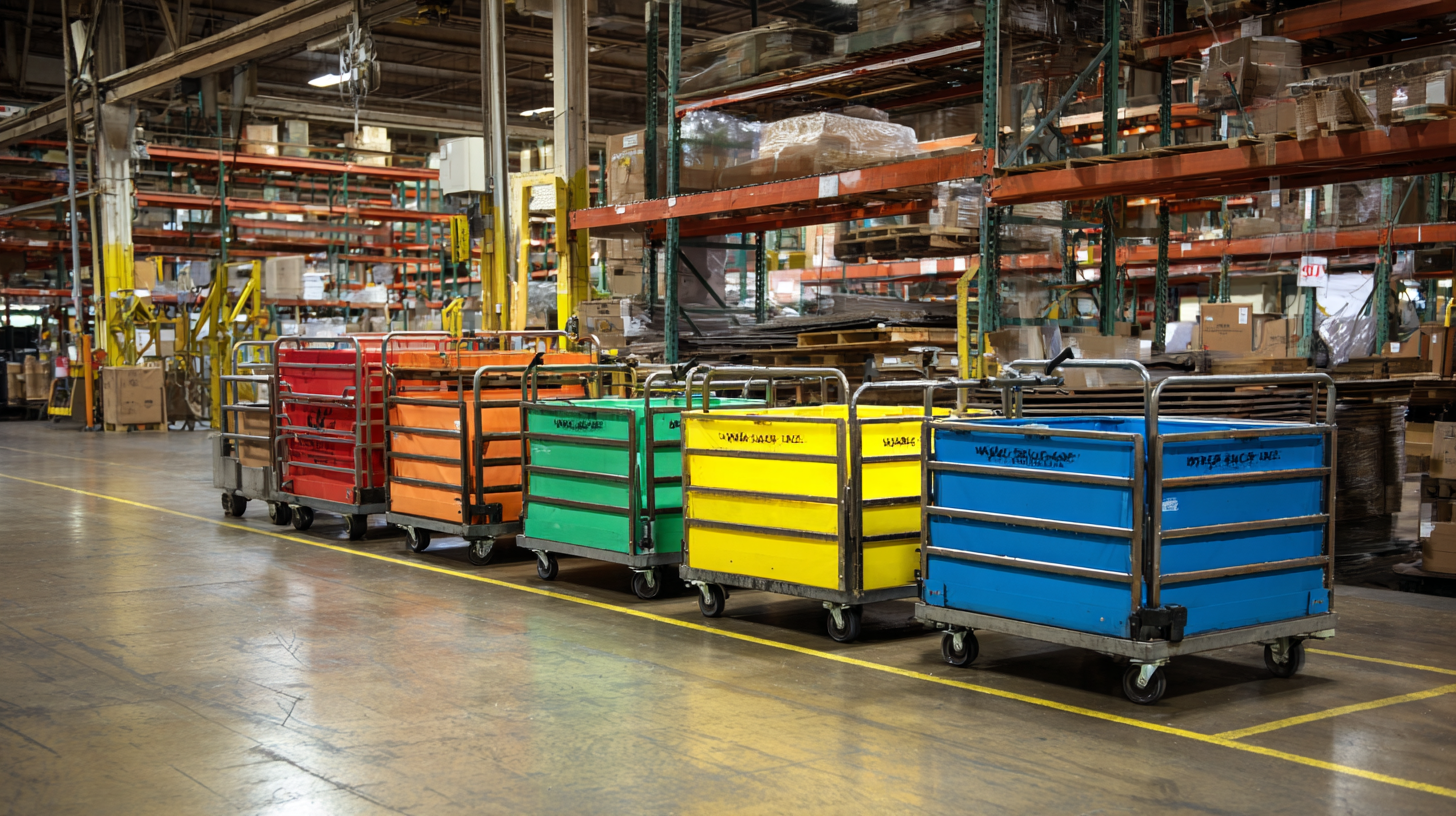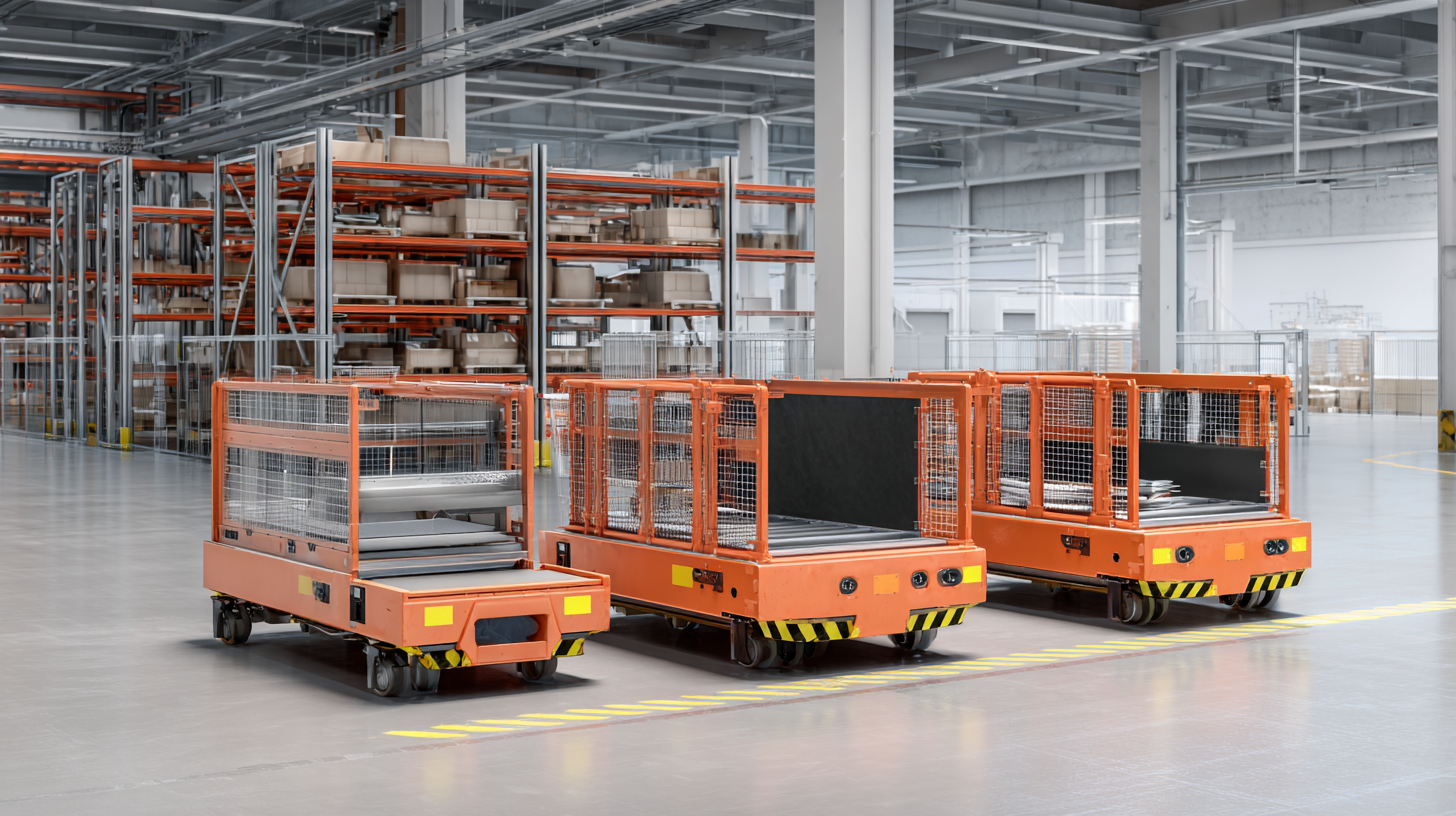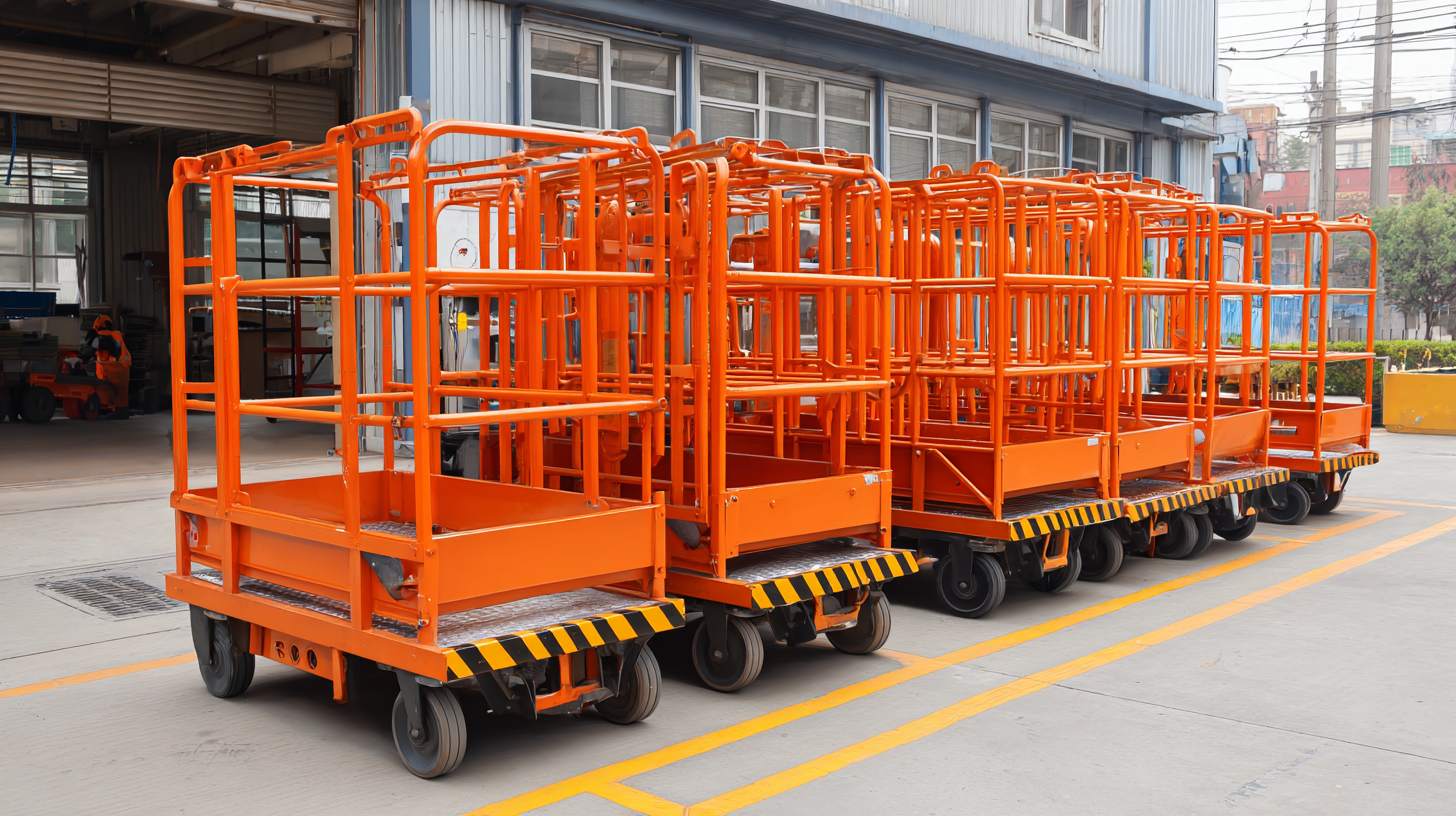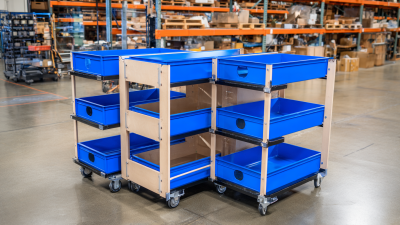The Essential Guide to Choosing the Best Material Handling Carts for Your Business Needs
In today's fast-paced industrial landscape, the efficient movement of goods is paramount for maintaining productivity and minimizing operational costs. Material handling carts, a crucial component in various sectors ranging from manufacturing to warehousing, play a significant role in streamlining these processes. According to the Material Handling Industry of America, the industrial material handling market is projected to reach $200 billion by 2025, highlighting the growing reliance on efficient transport solutions. With numerous types of material handling carts available, selecting the right one tailored to specific business needs can enhance workflow, improve safety, and reduce labor costs. This essential guide aims to equip businesses with the knowledge necessary to make informed decisions about material handling carts, ensuring that they choose the best options to optimize their operations.

Evaluating Material Handling Carts: Key Metrics and Specifications to Consider
When evaluating material handling carts for your business needs, several key metrics and specifications should guide your decision-making process. One of the foremost considerations is the weight capacity of the cart. According to the Material Handling Industry of America (MHIA), selecting a cart with an appropriate weight rating is crucial; carts that are rated too low can lead to accidents or equipment failure. For instance, if your business regularly handles loads exceeding 1,500 pounds, choosing a cart that can support at least this weight will ensure safety and efficiency.

In addition to weight capacity, the material composition of the cart is another significant factor. Carts made from steel offer durability but may be heavier and less maneuverable, while aluminum carts provide a lighter option without sacrificing strength. A report by the National Association of Manufacturers indicates that organizations utilizing lightweight carts improved their operational efficiency by up to 25%. Furthermore, wheel size and type can impact mobility; larger, swivel casters enhance maneuverability over uneven surfaces, making them ideal for warehouses or outdoor environments. By carefully assessing these metrics, businesses can select material handling carts that optimize both safety and productivity in their operations.
Understanding Load Capacity: Why It Matters for Your Business Operations
When it comes to selecting the best material handling carts for your business needs, understanding load capacity is critical. Load capacity not only affects the efficiency of your operations but also ensures the safety of your staff and products. Research indicates that working with equipment that exceeds their load capacity can lead to accidents and costly damages, accounting for up to 25% of warehouse injuries. Thus, businesses must assess their operational requirements and select carts that can handle the specific weights and sizes of their loads effectively.
**Tips:** Always check the manufacturer's specifications for load capacity and consider conducting a thorough analysis of your typical load requirements. Additionally, consider future growth; choosing carts with a slightly higher load capacity may save you from needing replacements down the line.
Furthermore, monitoring how load capacity correlates with overall business inteligencia can provide insights into cost management and efficiency. Studies show that organizations employing data-driven approaches to operations see a 15% increase in productivity. By utilizing material handling carts that match the load capacity needs, businesses can streamline processes, reduce downtime, and ultimately enhance performance.
**Tips:** Integrate a system for regular evaluation of equipment capabilities against your ever-evolving business demands to remain proactive in operational management.
The Essential Guide to Choosing the Best Material Handling Carts
This chart illustrates the load capacity of various material handling carts and their significance in business operations. Understanding load capacity is crucial for optimizing performance and efficiency in material handling.
Material Types Comparison: Choosing the Right Material for Your Carts
When selecting material handling carts for your business, understanding the various material types is crucial. Common materials include steel, aluminum, and plastic, each offering distinct benefits suitable for different applications. Steel carts are durable and ideal for heavy loads, while aluminum carts provide a lightweight alternative that resists rust. Plastic carts are often used for lighter loads, being versatile and easy to clean, making them suitable for environments like food service or healthcare.
**Tips**: Consider the environment where the cart will be used. If moisture or chemicals are a concern, opt for plastic or coated steel. Also, think about maintenance; aluminum requires less upkeep than steel in humid conditions. Additionally, assess the weight capacity required for your specific needs. A miscalculation can lead to inefficiencies or even accidents in the workplace.
In terms of mobility, the material of the wheels is equally important. Rubber wheels are great for indoor use as they provide stability and protect floors, while hard plastic wheels are suitable for outdoor use on rough terrain. Choosing the right materials for both the cart and its wheels can greatly enhance durability and performance tailored to your business requirements.
The Essential Guide to Choosing the Best Material Handling Carts for Your Business Needs
| Material Type | Weight Capacity (lbs) | Durability Rating | Ideal Use Cases | Cost Range ($) |
|---|---|---|---|---|
| Steel | 2000 | High | Industrial settings, heavy loads | 300 - 800 |
| Aluminum | 1500 | Medium | Lightweight loads, mobility | 200 - 600 |
| Plastic | 500 | Low | Food service, light-duty tasks | 100 - 300 |
| Wood | 1000 | Medium | Furniture transportation, storage | 150 - 400 |
| Composite | 1200 | Medium to High | Versatile uses, moderate loads | 250 - 500 |
Ergonomics in Cart Design: Enhancing Employee Safety and Efficiency
When selecting material handling carts for your business, ergonomics in cart design should be a primary consideration. Ergonomically designed carts not only enhance employee safety but also improve efficiency in the workplace. Features such as adjustable heights, comfortable grips, and proper weight distribution can significantly reduce strain on workers' bodies. By minimizing repetitive movements and awkward postures, ergonomic carts can help prevent injuries and boost overall productivity.
Moreover, the choice of materials and design elements can further enhance functional ergonomics. For example, lightweight yet durable materials can ease maneuverability, allowing employees to transport goods without excessive effort. Additionally, carts equipped with wheels that swivel and lock can provide greater control and stability during transportation. Investing in carts that prioritize ergonomic design not only fosters a safer working environment but also empowers employees to perform their tasks more effectively, ultimately contributing to the success of your business.

Cost-Benefit Analysis: Investing in Quality Material Handling Carts for Long-Term Savings
When considering the investment in material handling carts, a comprehensive cost-benefit analysis is essential to determine long-term savings for a business. According to the Material Handling Industry of America (MHIA), companies can reduce operational costs by up to 30% through the effective utilization of quality carts designed for specific needs. While the initial purchase price of durable, high-capacity material handling carts may be higher than cheaper alternatives, the return on investment can be substantial. A study by the National Association of Wholesaler-Distributors indicates that organizations utilizing premium carts experience a 25% increase in productivity due to reduced downtime and maintenance costs.
Moreover, investing in quality carts can lead to improved safety and employee satisfaction. The Occupational Safety and Health Administration (OSHA) reports that manual handling injuries are responsible for over one-third of all workplace injuries. Quality material handling carts minimize these risks by providing better ergonomic support and reducing the physical strain on workers. As a result, businesses can also save on potential workers' compensation claims and downtime caused by injuries. By aligning materials handling investments with safety guidelines and employee well-being, companies can not only enhance operational efficiency but also create a healthier work environment, reinforcing the value of investing in quality over initially lower-cost options.



